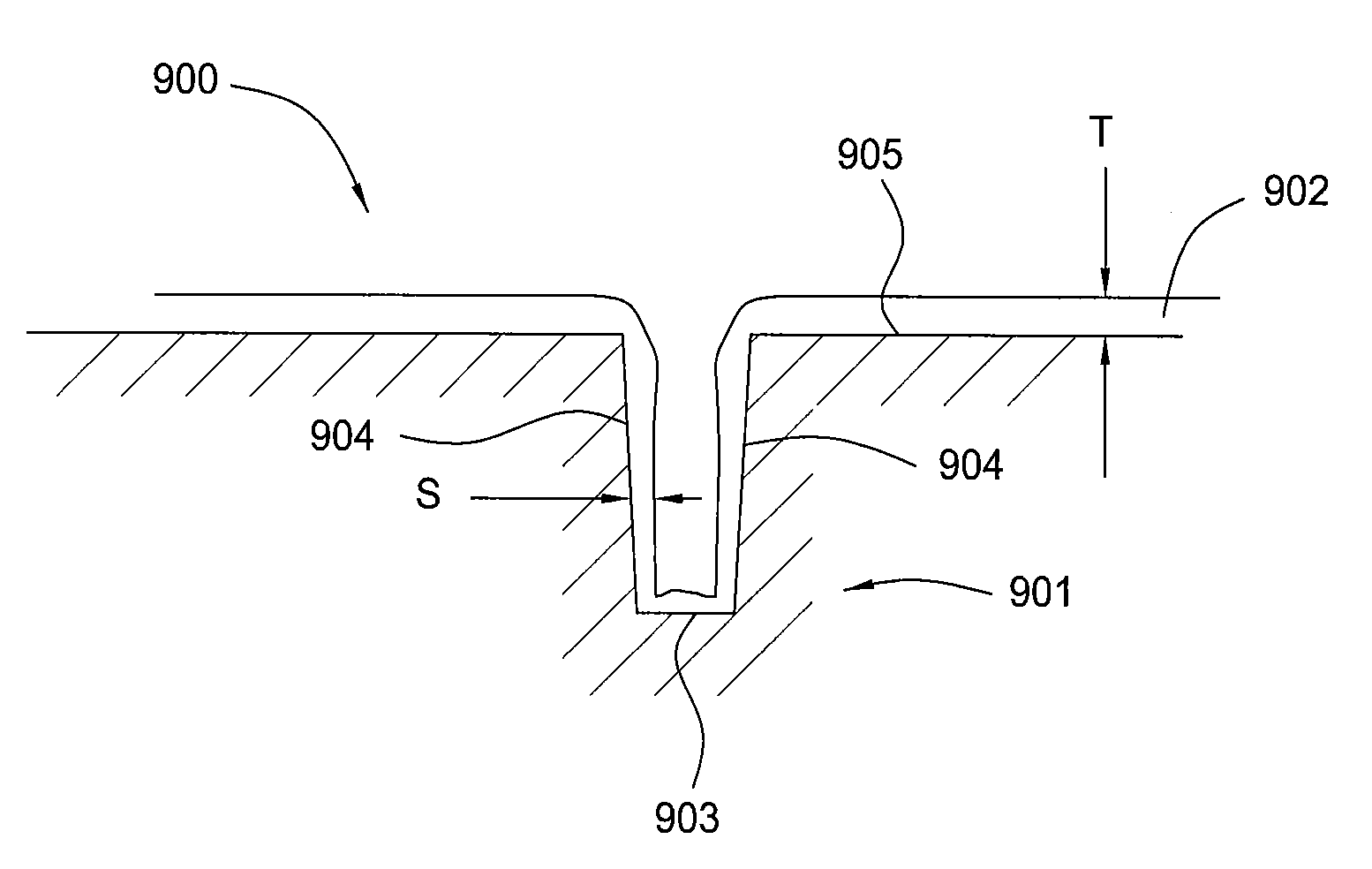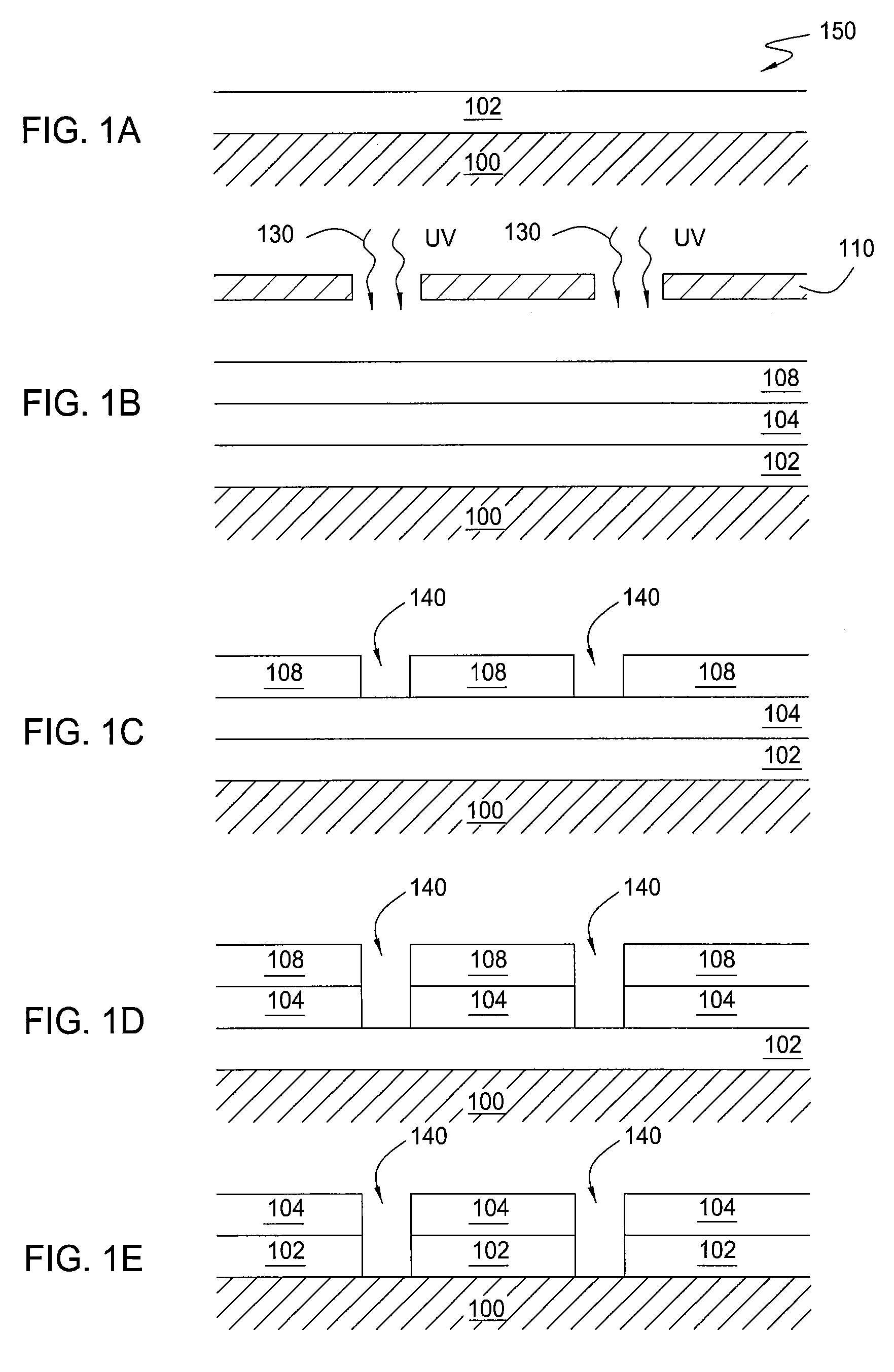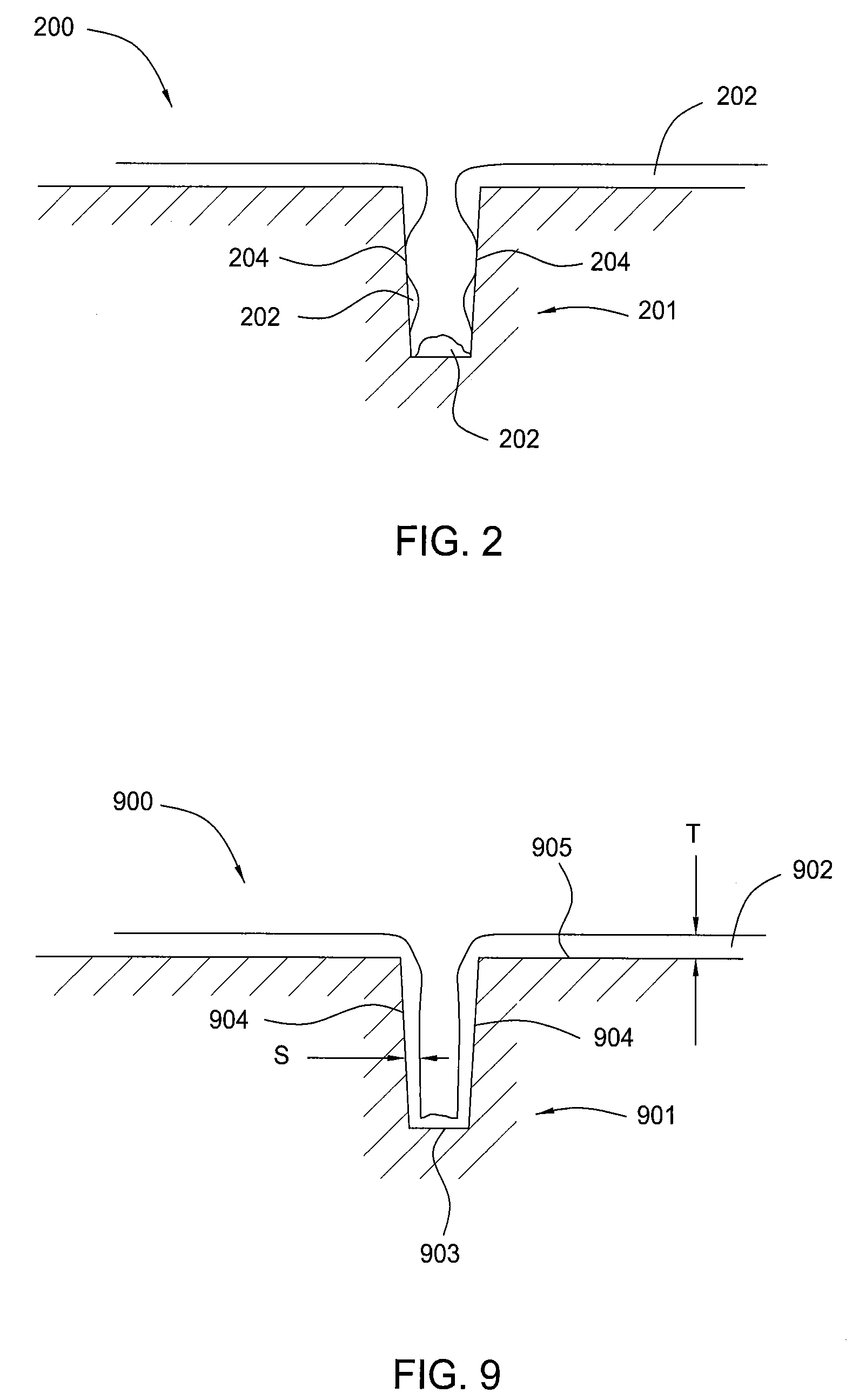Method For Depositing an Amorphous Carbon Film with Improved Density and Step Coverage
a technology of amorphous carbon and step coverage, applied in the direction of chemical vapor deposition coating, coating, plasma technique, etc., can solve the problems of low-k material devices with little or no surface defects or feature deformation, and increase the likelihood of defects on the substrate surfa
- Summary
- Abstract
- Description
- Claims
- Application Information
AI Technical Summary
Benefits of technology
Problems solved by technology
Method used
Image
Examples
Embodiment Construction
[0036]The inventors have learned that there is a strong correlation between a-C:H film density and etch selectivity regardless of the hydrocarbon source used to deposit the a-C:H film. FIG. 3 is a graph plotting the relationship between film density and etch selectivity of multiple samples of four different a-C:H films 301A-D deposited on different substrates. Etch selectivity is the factor by which an underlying material is etched compared to a given a-C:H film, i.e., an etch selectivity of 10 indicates that an underlying material is removed ten times faster than the a-C:H film. Each of films 301A-D were formed from different precursors and processing conditions. The data reveal a substantially linear correlation between the density and etch selectivity of each film regardless of the precursor. These results demonstrate that it is possible to achieve a desired etch selectivity for an a-C:H film by increasing the film density, even though the processing temperatures and precursors a...
PUM
| Property | Measurement | Unit |
|---|---|---|
| pressure | aaaaa | aaaaa |
| density | aaaaa | aaaaa |
| temperature | aaaaa | aaaaa |
Abstract
Description
Claims
Application Information
 Login to View More
Login to View More - R&D
- Intellectual Property
- Life Sciences
- Materials
- Tech Scout
- Unparalleled Data Quality
- Higher Quality Content
- 60% Fewer Hallucinations
Browse by: Latest US Patents, China's latest patents, Technical Efficacy Thesaurus, Application Domain, Technology Topic, Popular Technical Reports.
© 2025 PatSnap. All rights reserved.Legal|Privacy policy|Modern Slavery Act Transparency Statement|Sitemap|About US| Contact US: help@patsnap.com



